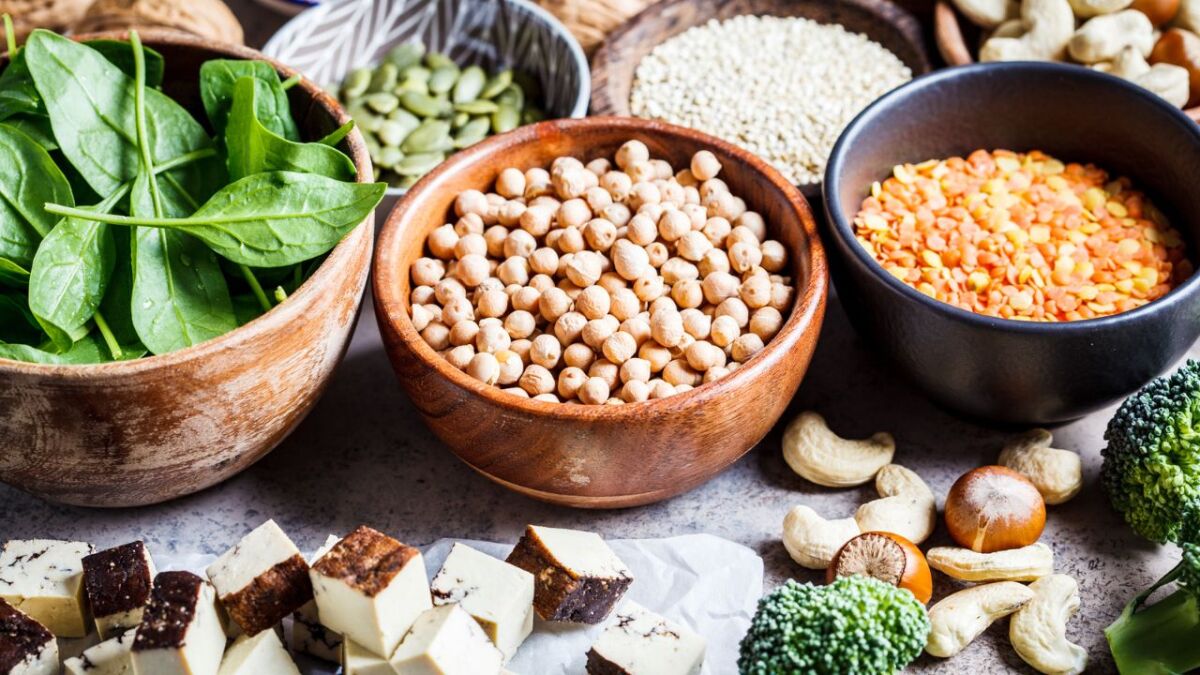
The 11 best plant-based protein sources for emergencies (meat alternatives)
👉 The key facts from this guide
- In emergencies when meat is not available, you can use plant-based protein sources.
- Spinach, canned kidney beans, cereals, oats, frozen peas, Parmesan cheese, acorns, walnuts, hazelnuts, nettles, and maple seeds are good plant-based protein sources.
- Proteins are essential for your body, supporting muscle growth and ensuring stability.
- The right selection of food can also be a matter of life and death in an emergency.
- Protein-rich foods provide greater satiety than carbohydrate-rich foods.
- It is important to be cautious when preparing and consuming certain plant-based protein sources, such as acorns and nettles, as they can be poisonous when raw.
During an emergency, it can be difficult to get enough protein, especially if meat is not available.
This can lead to concerns that you are not getting enough nutrients to support your muscles and other bodily functions.
Fortunately, however, there are many plant-based protein sources that provide a healthy and delicious alternative.
In this article, I will introduce you to the 11 best plant-based protein sources for emergencies so that you can maintain a healthy and balanced diet even without meat.
Proteins are essential for your body
If you have ever heard a bit about the scene, then you have surely also been part of the wildest debates about which resource your body needs most in emergencies.
Yes, of course - water, food, shelter, and so on. But have you ever thought about it more closely?
If there is one term that I love to conjure up in some of my articles, it is your ability to act.

Again and again, I preach that you should always and constantly be able to act! And yes, that also includes proper nutrition, not only in everyday life, but especially in emergencies.
That's right, the right choice of your food can also determine life and death in an emergency when the going gets tough.
Proteins play a particularly important role in this.
I know you require carbohydrates for energy. But if you're looking for more than just quick energy boosts – which you should be – then you can't avoid a good source of protein.
Proteins not only promote muscle growth and ensure stability in your body, but also contribute to a healthy testosterone level (which, by the way, women also need, just in a different ratio).
Furthermore, they release substances in your brain that make you more fit, active, and alert. Because what you can't afford in an emergency is lethargy!
In addition, the satiety you achieve with protein-rich foods is much higher than with carbohydrate-heavy foods. On the one hand, proteins take longer to digest and metabolize, and on the other hand, they prevent a rapid rise and subsequent fall in blood sugar levels.
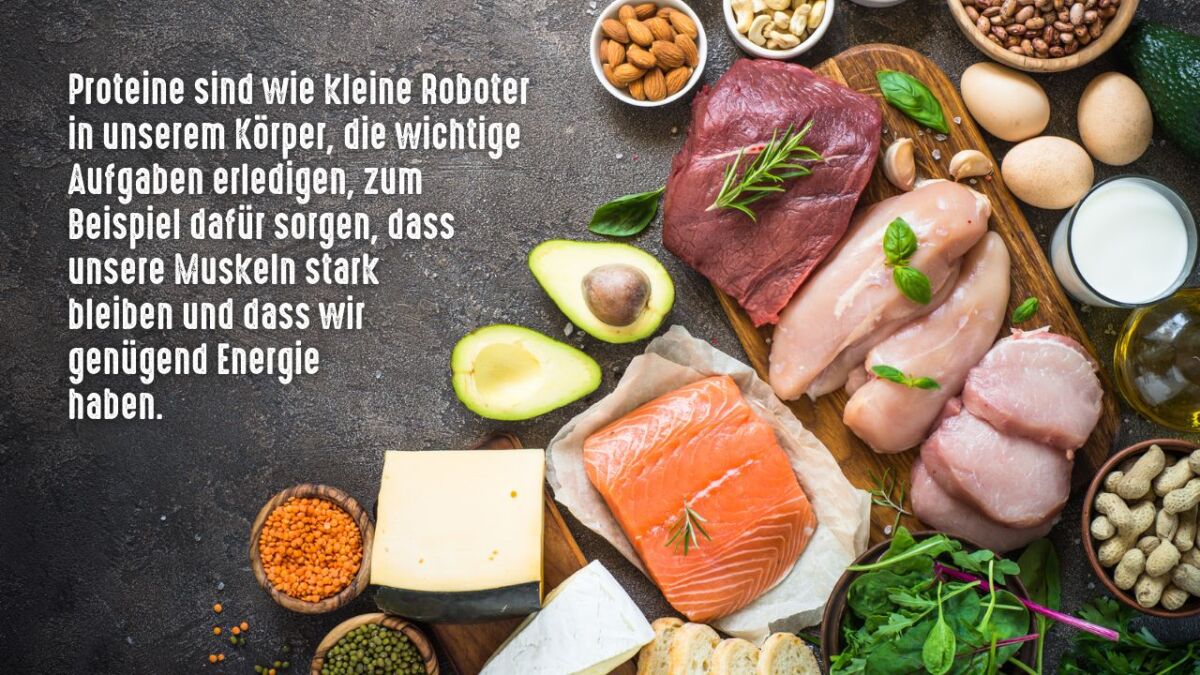
The problem, however, is that especially whole protein sources such as eggs, meat, or cottage cheese can quickly run out in emergencies.
We tend to consume not only sugar but also specifically proteins, which can lead to high use, especially in stressful situations or generally heavy loads.
But don't worry, even if your main source of protein is depleted in a very short time, there are still ways to meet your needs.
In this article, I'm going to show you 11 great sources of protein that you can use in an emergency. Let's start with spinach.
1. Spinach
Even Popeye knew it! Or what do you think, why did he always gobble down a can of spinach when he required extra power?
While spinach does not contain as much protein as meat, it is mainly used to add a small protein boost to other meals and thereby pep them up.
- Amount of protein ➡️ About 3 grams of protein per 100 grams of spinach
- Where to find spinach? ➡️ At the supermarket or in your garden
There are numerous ways to prepare spinach. A relatively simple but very nutritious way is to prepare spinach together with potatoes. If you add a cream sauce or some milk, you have a well-rounded meal consisting of excellent carbohydrates and a good amount of protein.
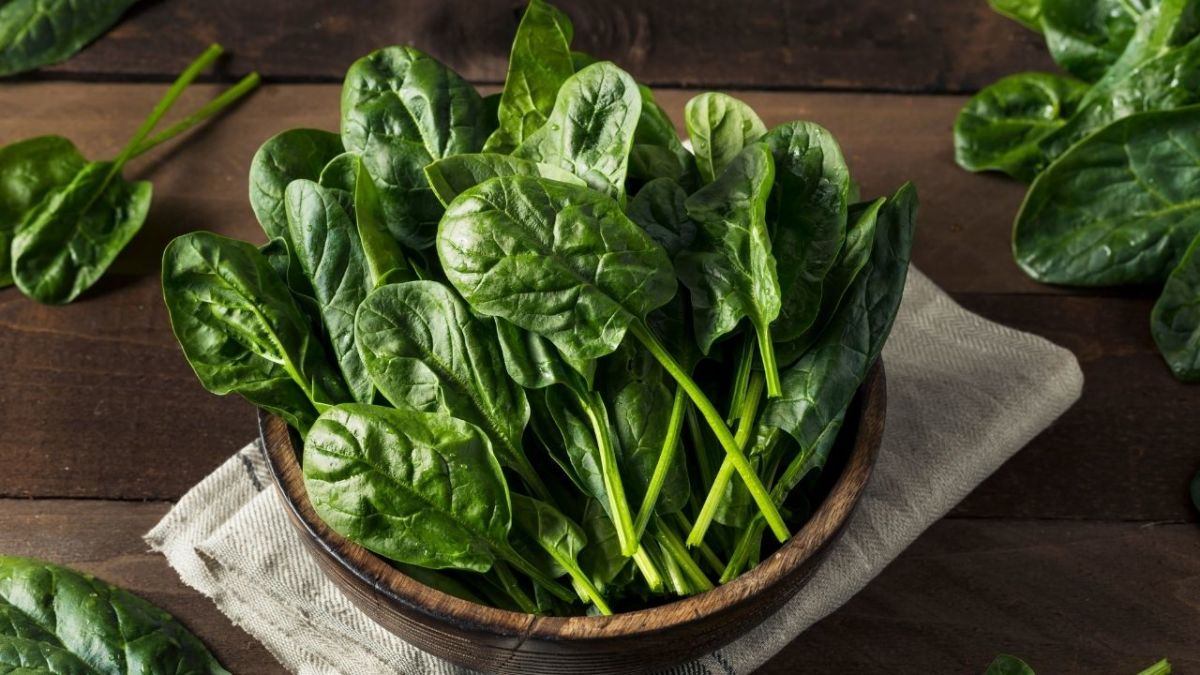
You can also prepare spinach as an addition to pasta. Again, you benefit from the ideal combination of carbohydrates and proteins. In other words, you get an energy-giving and filling mixture of two important macronutrients.
Spinach as standalone food will probably not keep you full for long. So, always prepare it (if possible) as an addition or side dish. Exceptions confirm the rule: If you like to eat spinach as the main course without any other ingredients, go for it!
2. Canned kidney beans
Kidney beans from a can are definitely a recommended source of protein, and not just because they have a particularly long shelf life when canned.
These small, plant-based protein bombs supply you with high-quality plant protein, which offers all the benefits you need in an emergency.
- Amount of protein ➡️ About 8 grams of protein per 100 grams of beans
- Where can you find the beans? ➡️ In the supermarket or your garden
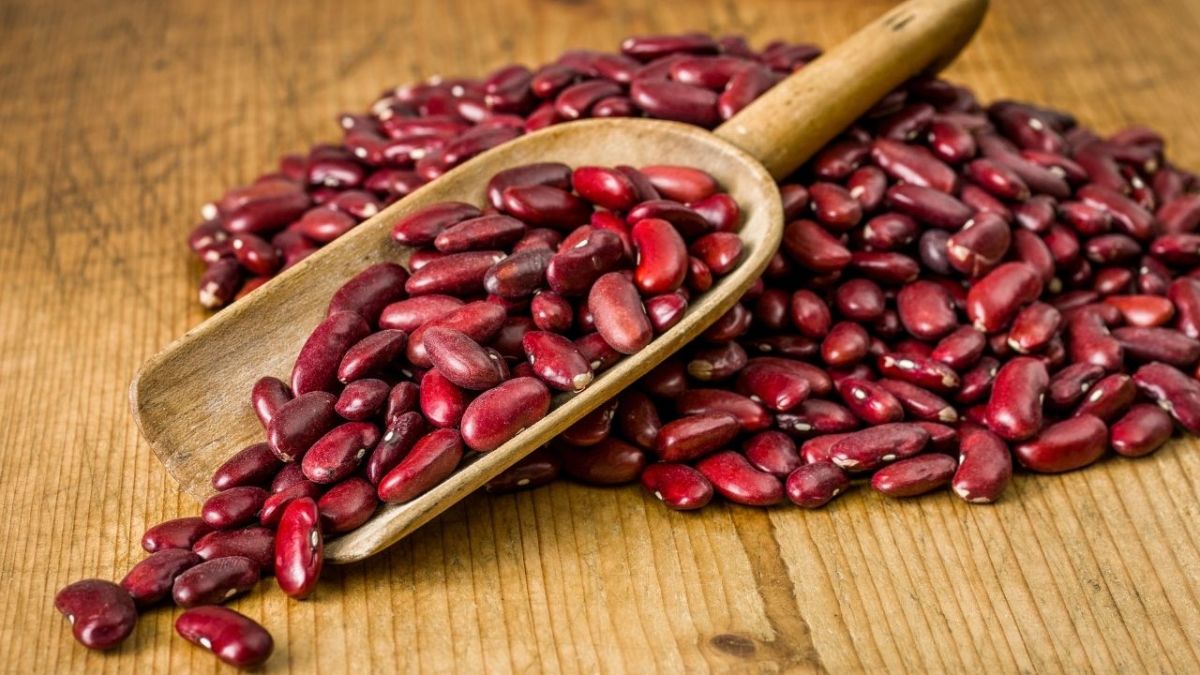
You can prepare kidney beans from a can in various ways. Combine them with corn in a delicious and healthy bean and corn salad by mixing the two ingredients together, adding some vinegar and oil, and seasoning to taste. If you can think of other ingredients, such as onions, you can simply add them as well.
Besides that, the little protein bombs work great in various stews (like a bean pan, here's the recipe), to significantly increase its protein content. So, you can enjoy them warm or cold, as you prefer!
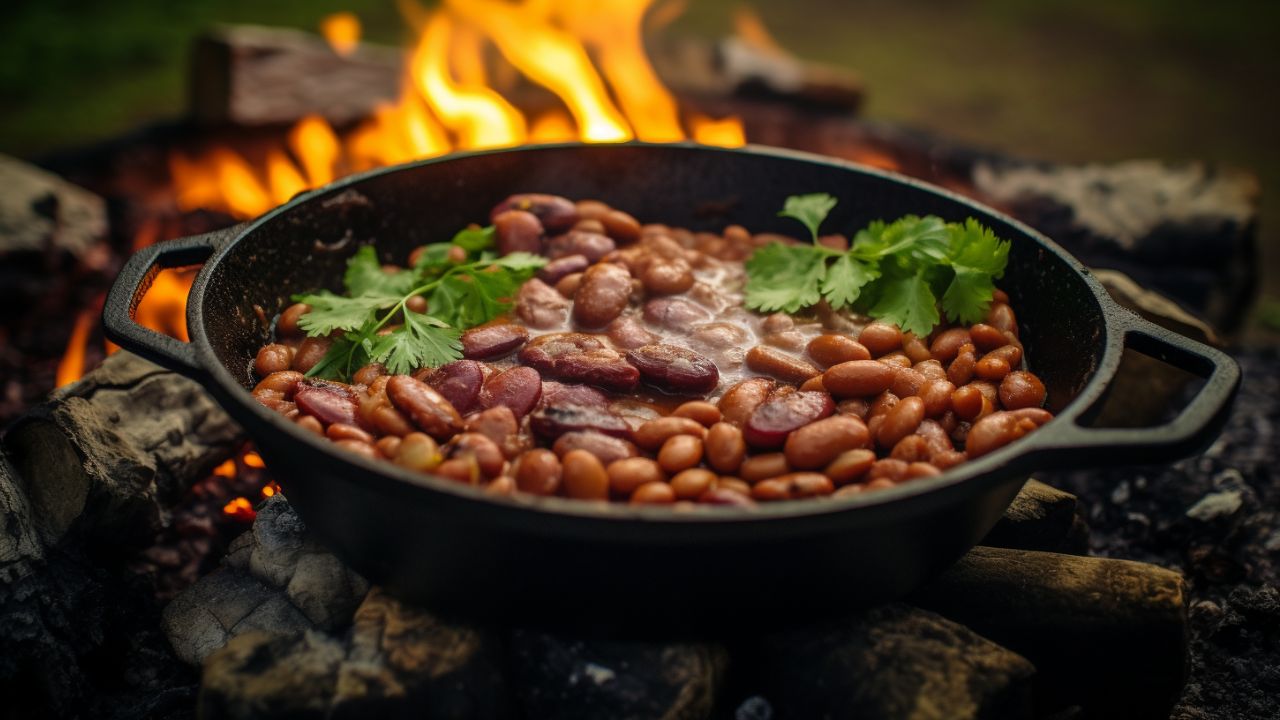
You can also enjoy kidney beans not only from a can, but also dried.
100 g of dried kidney beans contain a wonderful 21 g of protein per 100 g! Dried, this plant-based muscle builder makes an excellent snack for in-between.
Attention: When it comes to all legumes, including kidney beans, make sure to either cook them before consumption or buy them pre-cooked. Most legumes contain toxins in their raw state, the consumption of which can be fatal! These toxins are neutralized only by cooking the legumes.
3. Cereals
What? The sweet grain nuggets that you probably loved to eat for breakfast as a child are supposed to be good protein sources? Even these sugar bombs?
Well, you won’t get the amount of protein that a decent steak would provide, but that’s not the point. Cereals can be worth considering as an additional source of protein in an emergency.
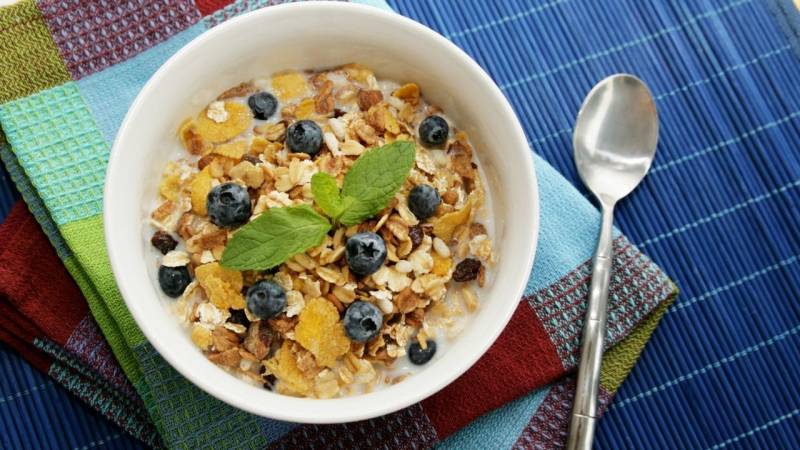
Of course, there are giant differences between the various types of breakfast cereals. This applies particularly to "ordinary" muesli and what we might call "sweet-oriented" cereals. A good breakfast muesli can be packed with nutritious protein sources, even in a pre-packaged form, which can help you through the day.
In the best case, you will receive a reasonable, complete meal that provides you with a combination of proteins, carbohydrates, and some healthy fats.
My personal tip: When buying breakfast cereals, pay attention to healthy ingredients because even healthy muesli can taste absolutely delicious and help your health!
- Amount of protein ➡️ Depending on the variety, between 2 and 20 grams of protein per serving
- Where to find cereals? ➡️ In almost every supermarket
4. Oatmeal
If we're already talking about muesli, oatmeal must definitely be mentioned.
Especially in exceptional situations, oatmeal not only offers you a long shelf life and a lot of energy, but also a lot of protein! You can buy oatmeal in coarse or fine form, depending on your personal preferences.
- Amount of protein ➡️ 6–13 grams of protein per 100 grams of oatmeal
- Where to find oatmeal? ➡️ In almost every supermarket
You can vary the preparation of oatmeal, no matter how simple it may be. You can prepare them as muesli with nuts, fruits, milk and other foods, make oatmeal out of them, or consume them with low-fat curd cheese for an extra protein boost.
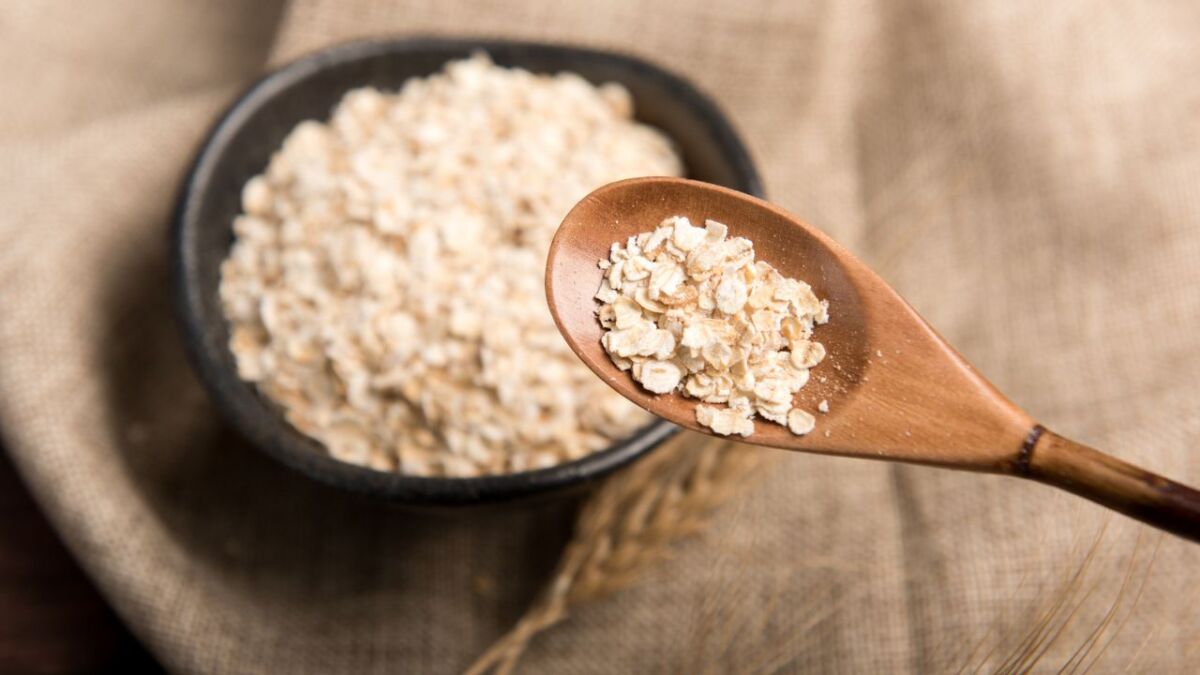
5. Frozen peas
Another plant-based source of protein is frozen green peas. Peas are comparatively inexpensive and contain a considerable amount of protein, making them an excellent alternative source of protein for emergencies or exceptional circumstances.
Furthermore, you can prepare them for numerous meals, so you remain variable.
I recommend using frozen peas for this purpose. While fresh peas also contain valuable nutrients, the frozen version has a few advantages to offer, especially in SHTF scenarios - and I don't just mean the affordable price!
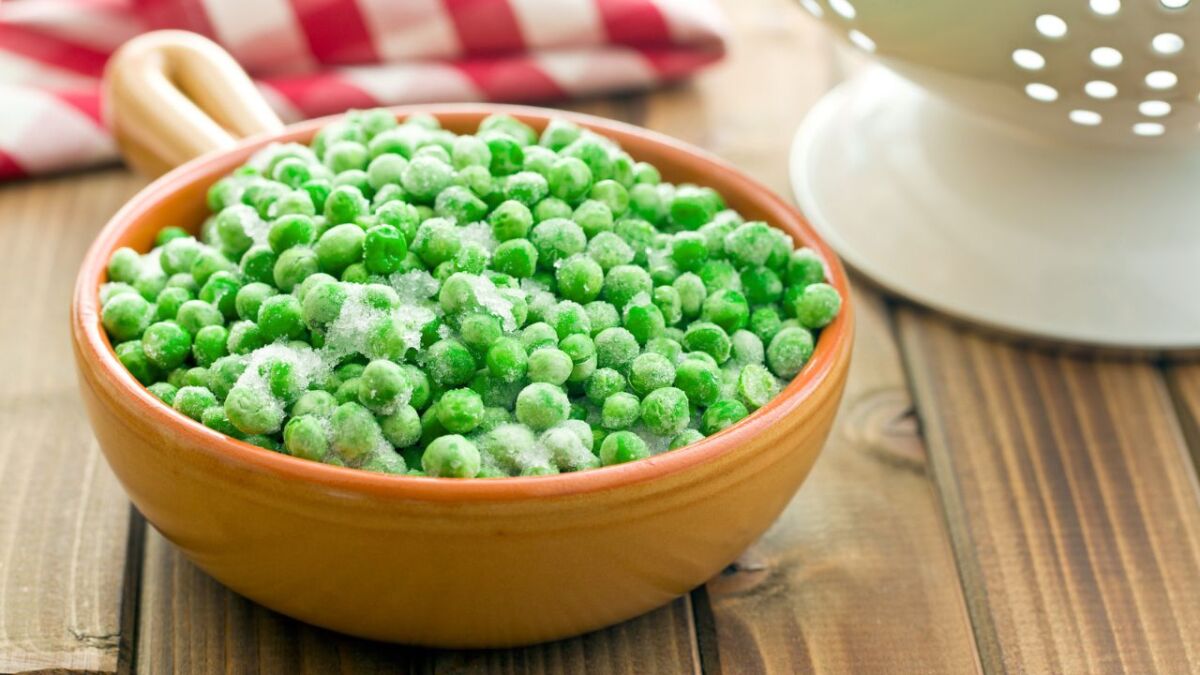
Frozen peas are extremely durable as long as they remain frozen - ideally for several years!
If you have to stay for a longer period of time at your home or in your bug out location, you rely on food that can be stored for a long time! But that's not the decisive factor for frozen peas.
The important nourishing substances in the pea remain preserved much longer through shock freezing than in fresh, raw form. So, when consuming peas, you can expect to get all the necessary nutrients, including protein, directly into your body.
- Amount of protein ➡️ Between 4 and 8 grams of protein per 100 grams of peas
- Where to find peas? ➡️ You can find frozen peas in numerous supermarkets
You can also consume peas raw, unlike many other legumes.
If you don't have time to cook or prepare them, you can also use them as a quick snack. Whether you let them thaw first or eat them frozen is entirely up to you. Either way, you'll get all the significant nutrients.
In addition, peas can be used as a great side dish for cooking, for example, with noodles or potatoes or in stews.
6. Parmesan Cheese
Just like breakfast cereals and frozen beans, Parmesan cheese is probably found in most modern households.
In most cases, it is used as a delicious addition to certain pasta dishes, baked casseroles, or simply as a snack. Since it also lasts quite long, it can be considered a long-term pleasure.
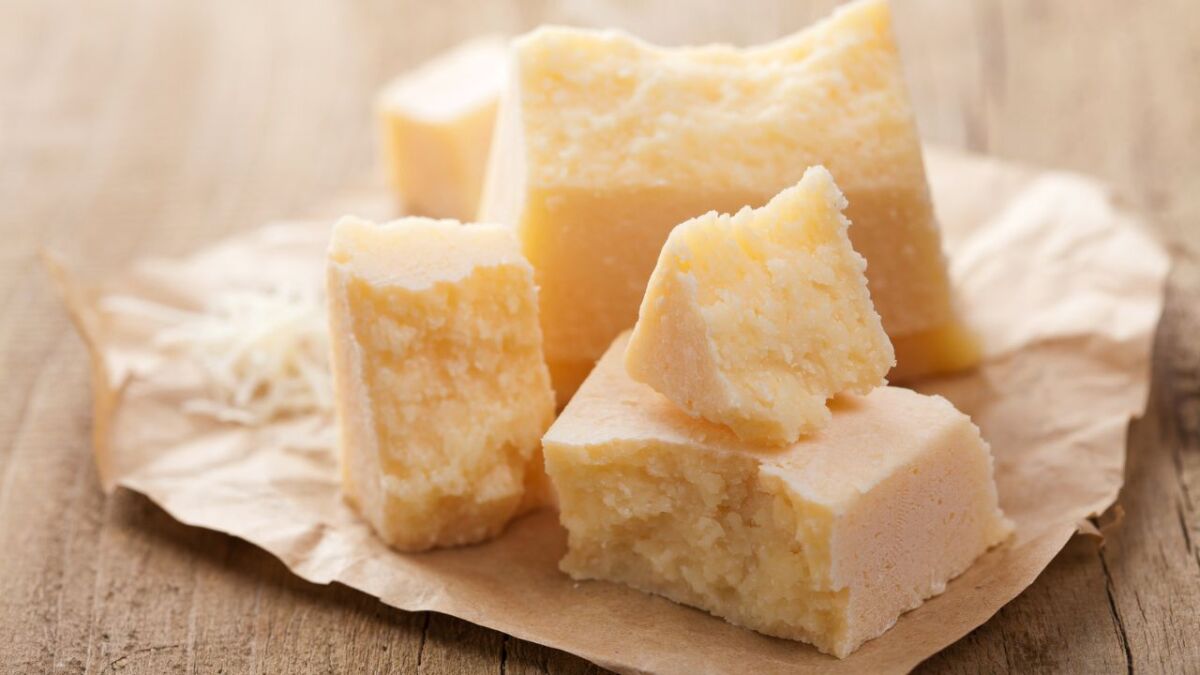
But what many do not realize: cheese in general and Parmesan in particular contains a lot of protein.
And this even though you don't have to consume a large amount of it. So if you want to have an emergency protein bomb at home, you should get yourself one or two packages of Parmesan cheese - it's worth it!
- Amount of protein ➡️ up to 38 grams of protein per 100 grams of cheese
- Where to find Parmesan cheese? ➡️ In all modern supermarkets
7. Acorns
First: please don't go to the nearest tree in your area, collect one acorn after another and eat them raw.
Acorns are generally inedible to toxic, but also edible. If you're confused, don't worry! I'll explain what is meant.
Acorns contain many healthy substances, including protein. On the other hand, there are also tannins and bitter substances on them, which "reward" consumption with rather unpleasant consequences. These tannins (The bark is used to tan animal hides) must, of course, be removed.
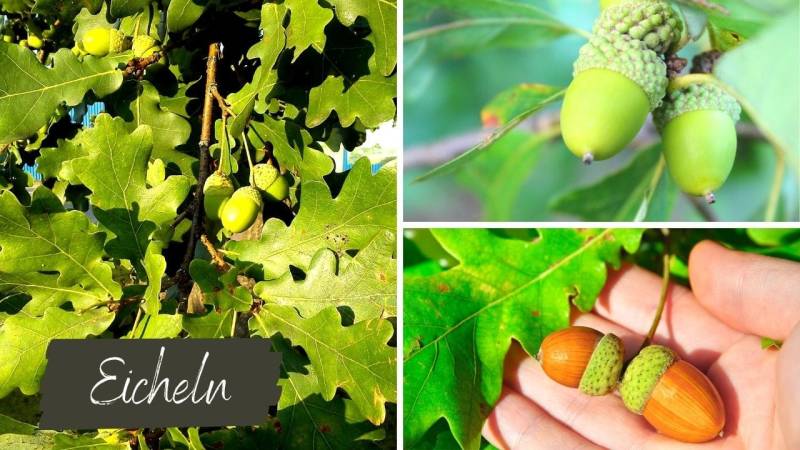
However, acorns were not called staple foods in the Middle Ages for nothing. The oak tree was lovingly called the "bread tree" at the time, as it was able to provide for entire families. So, you can see that you can benefit from this little "nut" if the worst comes to the worst.
- Amount of protein ➡️ About 6 grams of protein per 100 grams of acorns
- Where to find acorns? ➡️ The oak tree is represented all over the world
As mentioned at the beginning, you have to remove the bitter and tannin substances from the acorns before eating to avoid symptoms of poisoning such as diarrhea, vomiting, and abdominal pain. Removing the toxins from the oak tree is relatively uncomplicated. All you need is water.
You can flush out all the toxins from the acorn with water.
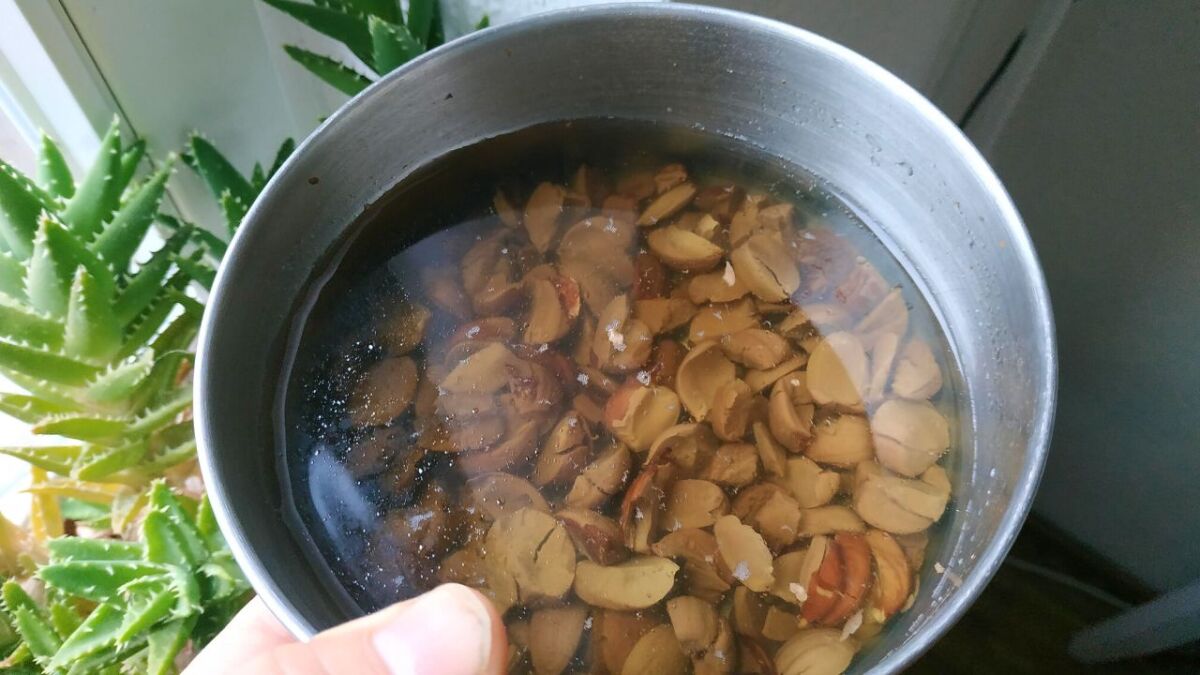
So, you soak the acorn with constantly changing water until it no longer leaves any discoloration in it.
Imagine you want to clean an object in water and do so until no more dirt is found in the water. If you boil the water with the acorns, it will be even faster.
You should peel the acorns before cooking. Then put them in a pan and start roasting them.
You can also make bread or tea with the acorns.
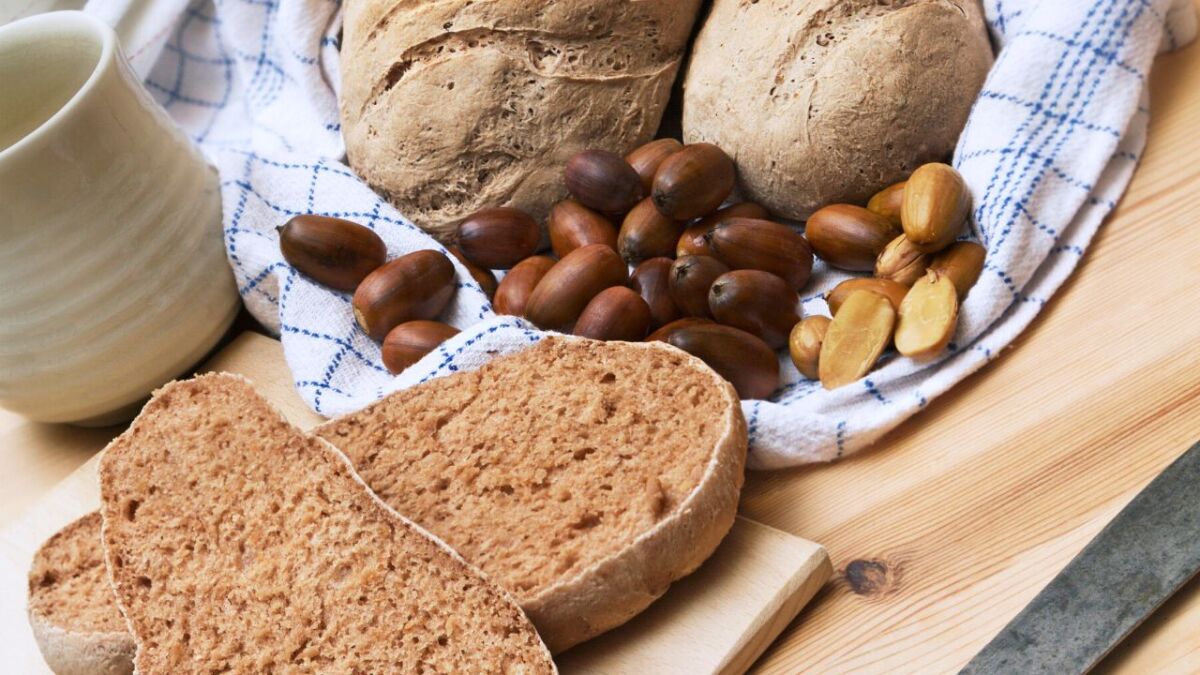
8. Walnuts
Another nut that you can find in forests and that has an excellent protein content is the walnut.
Maybe you even plant a walnut tree in your garden and supply yourself with this valuable source of protein accordingly?
- Amount of protein ➡️ About 4.3 grams of protein per 100 grams of walnuts
- Where to find walnuts? ➡️ Packaged in supermarkets or on walnut trees
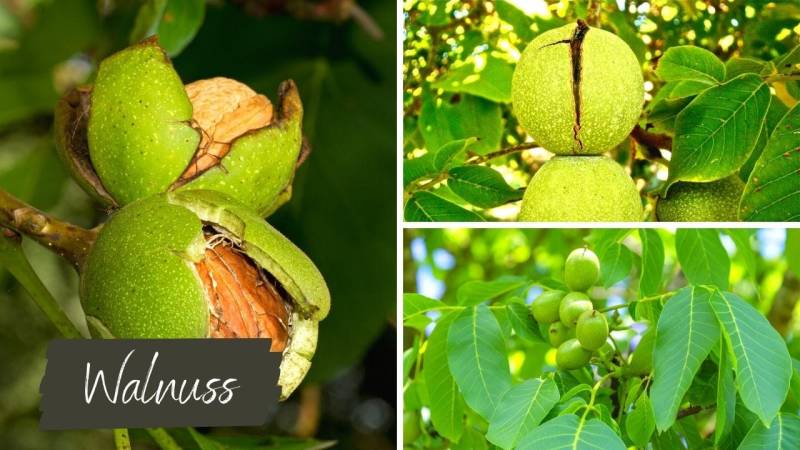
If you are collecting your walnuts yourself, make sure to only collect ripe nuts.
You can recognize a ripe walnut by the smooth, thin layer that surrounds the walnut shell, which has already fallen off. So only the shell and the nut are included.
To open the nut, use a simple nutcracker or crack it with a stone.
You can enjoy the inside as a spontaneous snack, in salads, or in stews and casseroles. Nuts contain not only proteins, but also many healthy fats. This will keep you full and provide you with important nutrients.
9. Hazelnuts
Not only do walnuts contain a large amount of protein and other healthy nutrients that can positively affect your hormone balance.
Hazelnuts also have these benefits and are therefore an extremely helpful source of protein that is ideal as a snack.
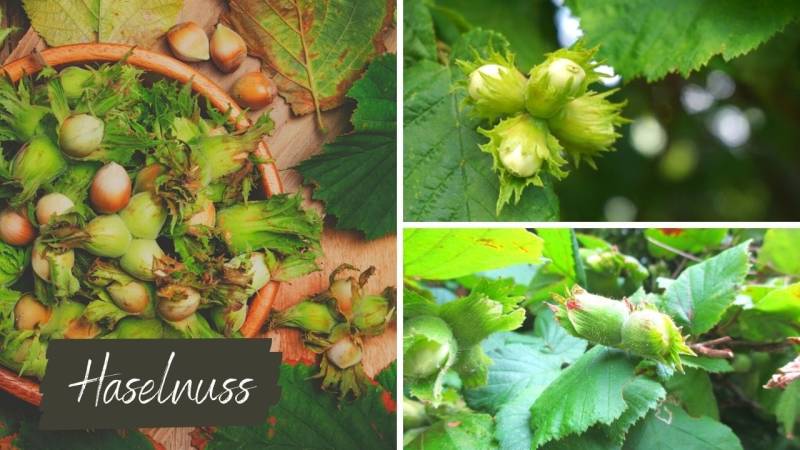
- Amount of protein ➡️ About 4.3 grams of protein per 100 grams of hazelnut
- Where to find hazelnuts? ➡️ Packaged in the supermarket or on hazelnut trees
Nuts keep for quite a while, so if you like, you can buy a decent stock of packaged nuts at the supermarket.
Usually, these are ready to eat immediately. So even in exceptional situations, you can rely on a quick protein snack when you reach for hazelnuts.
If you collect hazelnuts yourself, harvest them as ripe as possible. If you pick relatively unripe nuts, they will quickly spoil, which is not conducive to your situation.
If you still collect a few hazelnuts that are not fully ripe, you can let them ripen in a container with a lid. But check them regularly for pests.
Also read
Edible Plants: This emergency food can be found in the forest (list + pictures) - Are you unsure which plants you can eat in an emergency? Then let's learn together, and I'll show you how to guarantee that you won't starve in the forest.
10. Nettles
What may have caught your attention as a child in an unpleasant way can now serve as a valuable and above all healthy source of protein for all occasions.
You will have to prepare nettles properly (at least I recommend it if you would rather not have painful experiences), but in return, you will get a true "superfood".
- Amount of protein ➡️ About 7 grams per 100 grams of nettles
- Where to find nettles? ➡️ In all forests and meadow areas, you can also grow them yourself or buy them in certain stores.
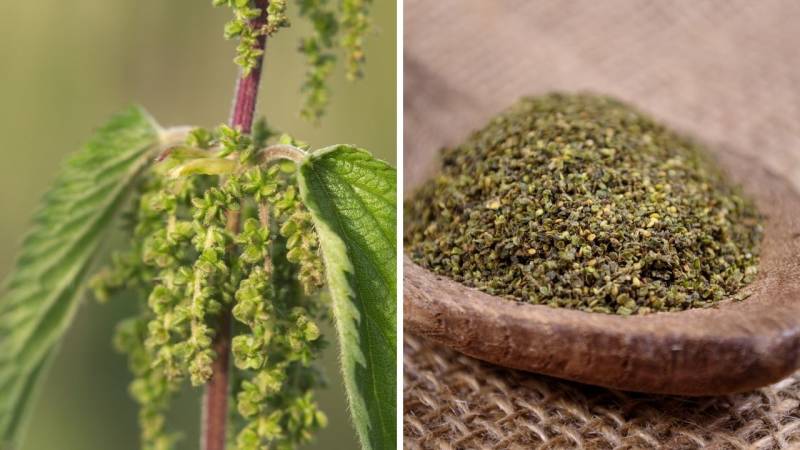
Harvesting nettles is generally uncomplicated, and there is a lot of it available in our latitudes.
However, as mentioned at the beginning, nettles can also cause unpleasant or even painful experiences. For this reason, you should protect yourself adequately if you want to harvest nettles.
It is best to wear thick gloves, a long-sleeved top, equally long pants (and please without holes) and sturdy shoes. You would like to avoid any skin contact with the nettle to avoid becoming a victim of its stingers and thus of pain and skin irritations. Cut the leaves off carefully and fill them into a bag or container.

If you harvest nettles in the wild, take a closer look at them. Insects and plant diseases are not uncommon, especially in older plants.
So choose the young and juicy specimens and be particularly attentive. You don't want plant diseases in your dish or garden.
To put an end to the painful effect of nettles once and for all, you need to wash the plant properly. Then you can wave it with a rolling pin. That's it with the tiny stinging hairs. Once that's done, you can even put the plant in your salad.
Cooked, you can consume nettles as a soup, in combination with eggs or as spinach. Here's even a recipe for nettle pasta.
If you live near forests or even grow your nettle in a forest garden, you have access to an almost inexhaustible source of protein that also provides you with vitamins and important nutrients - great, isn't it?
Read also
Nettles - this versatile power plant should be your outdoor friend - Learn all the facts about the versatile power plant nettles and how to use them in the wilderness as food, for ropes, and as a healing and strengthening agent.
11. Maple seeds
To go back to childhood for a moment: Haven't you also watched those little propeller-like plants slowly gliding down from the maple tree?
Did you know that these little structures are not only edible, but also extremely healthy?
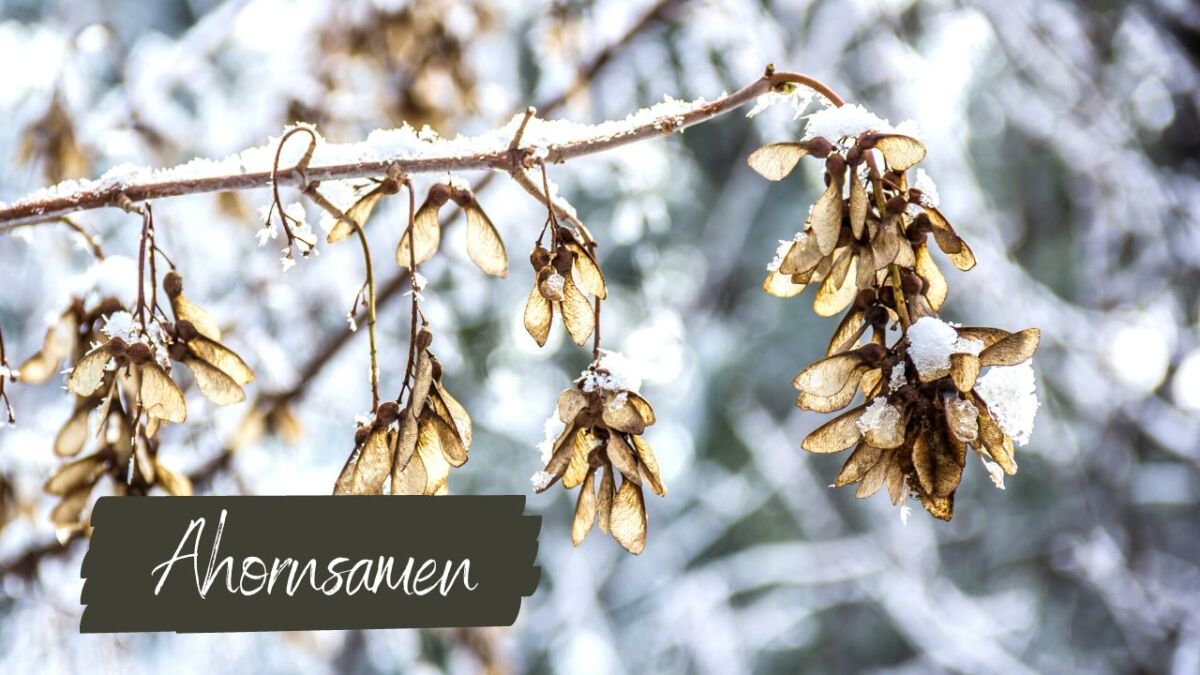
The maple seeds found in these plants are full of proteins and vitamins.
- Amount of protein ➡️ About 40% protein per gram of maple seed
- Where to find maple seeds? ➡️ Mostly in all forests
As for preparation, it's basic. You can pick up, open and simply eat the seeds from the little leaf.
Of course, you can also collect many them and then put them in a muesli or another dish.
Whether you prepare them as a snack, in a salad, a soup, or with butter and salt, is up to you. In any case, you get a vitamin- and protein-rich snack that is worth trying.
Conclusion: You can find emergency protein sources in both nature and civilization
If there's one thing I want you to take away from this article, it's the fact that you can already stock up on emergency protein sources.
And even without much effort - and on the other hand, in survival scenarios, there are numerous ways to provide yourself with valuable proteins and vitamins.
Furthermore, knowledge of these protein sources is the basis for recognizing and being able to use them in case of emergency.
Given this, I hope that I could help you with this article and that you might even have learned something new.
Thank you for your attention and I wish you continued fun and success on your journey, maybe you'll find some more valuable protein sources that you can use in an emergency.

Sources for the guide
"Protein Needs" von der Academy of Nutrition and Dietetics: https://www.eatright.org/health/wellness/preventing-illness/protein-needs
"Plant-Based Proteins" von der Academy of Nutrition and Dietetics: https://www.eatright.org/food/nutrition/vegetarian-and-special-diets/plant-based-proteins

Author of the guide
Martin Gebhardt
Hey, I'm Martin. On my blog, you will learn the basics and numerous details about living in the wild. I think survival, bushcraft and the good life in nature are the keys to happiness. Find me here on Instagram or on YouTube. You can find more about my mission on the About Me page.
Was this guide helpful?
18 people found this guide helpful.
5.00 out of 5 points (18 Ratings)
Comments (0)
This post may contain affiliate links. So if you click on the links and make a purchase, I will receive a small commission at no additional cost to you. Click here, to learn more about it.


